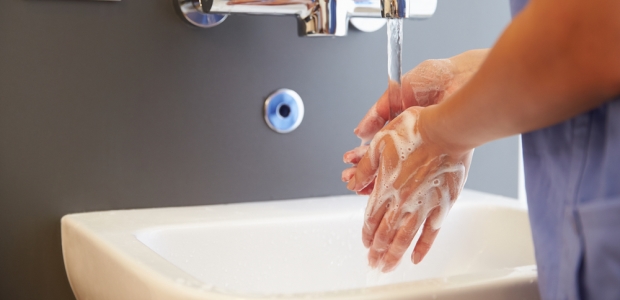
CDC Investigations Find Common Sources of Health Care Infections
"Everything here is water-related, which tends to be the case with health care," said Bryan E. Christensen, an industrial hygienist and epidemiologist with CDC's National Center for Emerging and Zoonotic Infectious Diseases. "There really needs to be an increased role for the industrial hygiene field at health care facilities. It's something that needs more emphasis going forward."
SEATTLE -- Preventing serious health care-acquired infections (HAIs) may come down in many cases to relatively simple control measures, including rigorously practiced hand hygiene, better cleaning and disinfection practices, and ultimately improved facility design, a CDC investigator explained June 7 in a presentation given at the AIHce EXP conference here.
Bryan E. Christensen, Ph.D., an industrial hygienist and epidemiologist with CDC's National Center for Emerging and Zoonotic Infectious Diseases, discussed four recent HAI investigations, including one involving nontuberculous mycobacteria (NM) infections of patients who had undergone cardiopulmonary bypass surgery. The investigation centered on heating/cooling units used in the surgery, equipment that contained three water tanks, high-pressure pumps, and multiple fans, he said. "We're still investigating where it's actually coming from in the unit," he said, explaining they confirmed that NM contamination in the airflow entered the patients' chest cavities, but in these cases the resulting illness would manifest two or three years later and be fatal for some of them. NM is an opportunistic and emerging HAI, he said.
Possible controls to prevent these infections include using disposable water tanks and reconfiguring the operating rooms so the heating/cooling units are not inside the room during the operation, he said.
An estimated 727,000 HAI cases occurred in the United States in 2011 alone in acute care hospitals, resulting in about 75,000 deaths, he said.
Other cases he described included bloodstream infections among dialysis patients -- 58 cases were identified from July 2015 to November 2016, far more than the expected one case per year, and the main culprit there was a wall box containing both the drain for removing waste from patients' blood and a supposedly sterile reverse osmosis water line -- and pseudomonas infections in a neonatal intensive care unit (NICU), where better hand hygiene, filters, and chlorination were among the recommended infection controls. Christensen also described an investigation of infections among patients ages 2-11 who had undergone pulpotomy procedures in a dental office, with insufficient treatment of waterline output water being identified as a source of infections. Controls here could include a new water management and monitoring plan and not rinsing clean, sterile bottles with tap water, as well as using sterile water for all invasive procedures and relocating the bottle drying rack, he said.
"Everything here is water-related, which tends to be the case with health care," he said. "There really needs to be an increased role for the industrial hygiene field at health care facilities. It's something that needs more emphasis going forward."